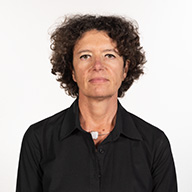Preparing Your Degree Thesis: An Introduction to the Final Examination
Preparing Your Degree Thesis: An Introduction to the Final Examination
Course description
The course aims to provide both an introduction to the basic theoretical and methodological content useful for all students approaching the preparation of their degree thesis for the first time—understood as a scientific research activity—and practical guidelines and specific instructions intended especially for students enrolled in the Bachelor's Degree Program in Science in Architectural Design. The course serves as a preparatory activity for the development of two types of final papers, A and B, as outlined in the Integrative Regulations for the Final Examination.
For students in the Bachelor's Degree Program in Science in Architectural Design who choose to develop Final Paper B, obtaining the final course certificate is mandatory in order to register for the final exam.
Total workload: 5 hours.
This MOOC is provided by Politecnico di Milano.
Intended Learning Outcomes
By actively participating in this MOOC, you will achieve different Intended Learning Outcomes (ILOs):
- Approaching the construction of a scientific methodology
- Structuring a table of contents for a research project
- Building a reference bibliography
- Organizing the timeline for the final degree project
- Developing critical awareness in research activities
- Understanding the issue of plagiarism
- Approaching the creation of a portfolio of one’s design work
- Navigating the choice between the types of final thesis allowed by the Integrative Regulations for the Final Examination
- Understanding the procedures, timelines, and formal requirements for preparing Final paper B
ESCO: thinking skills and competences ESCO: self-management skills and competences ESCO: presenting information
Prerequisites
No prerequisite knowledge is required for this course.
Activities
Over and above consulting the content, in the form of videos and other web-based resources, you will have the opportunity to discuss course topics and to share ideas with your peers in the Forum of this MOOC.
Assessment
Your final grade for the course will be based on the results of your answers to the assessed quizzes. You have an unlimited number of attempts at each quiz, but you must wait 15 minutes before you can try again. You will have successfully completed the course if you score 60% (or higher) in each one of the assessed quizzes. The maximum score possible for each quiz is given at the beginning of the quiz. You can view your score in the quiz on your last attempt or on the 'Grades' page.
Certificate
You can achieve a certificate in the form of an Open Badge for this course, if you reach at least 60% of the total score in each one of the assessed quizzes and fill in the final survey.
Once you have completed the required tasks, you will be able to access ‘Get the Open Badge’ and start issuing the badge. Instructions on how to access the badge will be sent to your e-mail address.
The Badge does not confer any academic credit, grade or degree.
Information about fees and access to materials
The course is delivered in online mode and is available free of charge.
Course materials will remain always available to all enrolled users.
Course faculty

Luigi Spinelli
Full Professor of Architectural And Urban Design at the Department of Architecture and Urban Studies, Coordinator of the Bachelor's Degree Program in Science in Architectural Design (2022–2024)

Laura Daglio
Associate Professor of Technological And Environmental Design of Architecture at the Department of Architecture, Built Environment and Construction Engineering, Deputy Coordinator of the Bachelor's Degree Program in Science in Architectural Design.

Stefano Di Vita
Associate Professor in Urban And Landscape Planning at the Department of Architecture and Urban Studies, Lecturer in the Bachelor's Degree Program in Science in Architectural Design.
Contact details
If you have any enquiries about the course or if you need technical assistance please contact pok@polimi.it. For further information, see FAQ page.